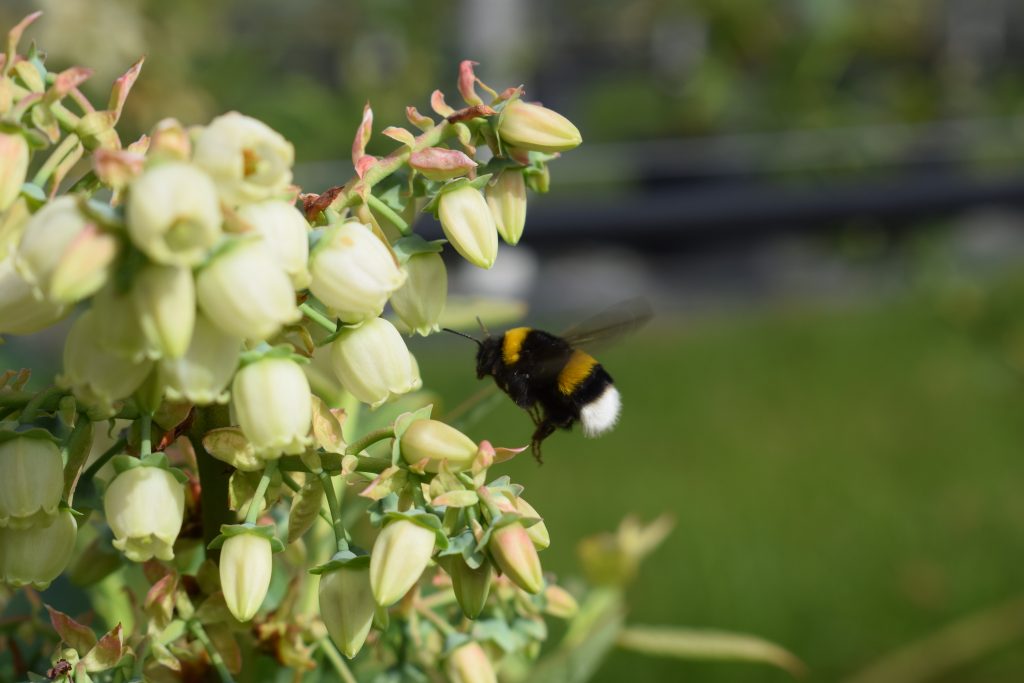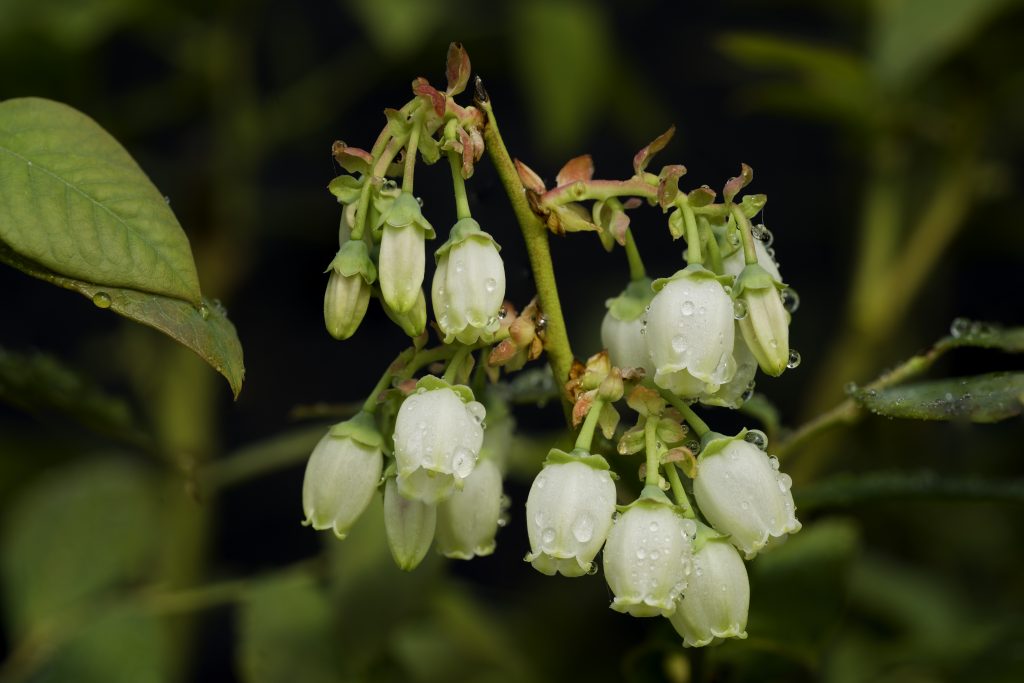Bumblebees (Bombus terrestris) are classified as very useful insects, Fairplant totally agrees with this statement. Although blueberry plants are self-pollinating, the use of insects, preferably bumblebees, within blueberry pollination is very important as the pollen are heavy and are not transported by the wind. Bumblebees have a positive effect on the development of the blueberries. The intervention of bumblebees will result in bigger fruit size and the fruits will ripen faster.
By vibrating heavily with their flight muscles, the pollen grains release.
– Manon Snellink, Fairplant
There are several reasons why Fairplant has chosen to work with bumblebees instead of honeybees. Fairplant’ demo-field is located in the north of Europe, so relative low temperatures are common during the flowering. Bumblebees are active at temperatures from 5°C, this temperature is too low for other bees to be active. They show up outside the nest at temperatures higher than 10°C. Besides, honeybees will stay inside when there is wind and cloudy weather. This is in contrast with bumblebees as they are active during these weather circumstances.

As they are family and look quite similar many people do not have the knowledge of the crucial difference between bumblebees and honeybees as it comes to blueberry pollination. Next to the weather circumstances they are active in, there is also a big difference in the way they collect pollen. By vibrating heavily with their flight muscles, the pollen grains release. Bumblebees collect pollen like this, it is also known as sonication. This a very important aspect since the pollen of blueberry flower not easily release and honeybees do not have this skill.
Another reason why Fairplant has chosen to use bumblebees is because of the fact that they can also be used for covered blueberry plants. This is important since the blueberry demofield of Fairplant is totally covered with anti-insect and anti-rain nets. Furthermore, the use of bumblebees is highly effective as they systematically visit all flowers in a bunch and visit more flowers per minute as honeybees do.
Furthermore, the bumblebee has a thick fur and their body is bigger, compared to the honeybee. This results in a better pollination as they transport more pollen. Additionally, bumblebees are less disturbed by other interesting plants. They stay closer to their hive and therefore they do not search for better opportunities, far from the hive, as other pollinators possibly do. However, no bad words about honeybees as pollinator. The combination of honeybees and bumblebees will give the best result as it comes to pollination.

Fairplant makes use of two bumblebee Multi-Hives of Biobest. The Multi-Hive of Biobest is a plug and play system which makes it user friendly. It consists of 3 separated large colonies of bumblebees, accommodated in a big weather-resistant polystyrene box. At delivery, it contains more than 350 workers in total.
We reccomend to put 4-6 hives per hectare. The bumblebees are active for approximately 2 months. After this time the queen starts to produce young queens and drones (males). From that moment onwards the activity of the colony decreases; the old queen stops laying eggs and eventually dies. With a young, mated queen who will hibernate alone, a new cycle begins. It is important to have good quality bees. Healthy bees help us to produce healthy and delicious berries.
Curious about the way we breed our blueberry plants or blueberries? Always open to contact Fairplant
